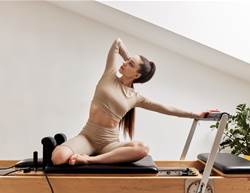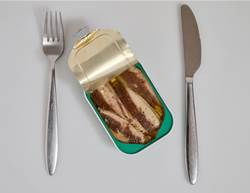With end-of-year drinks, school concerts and weekend getaways about to stack the calendar, trainer Jackson Gray shares smart, no-fuss tactics to lock in momentum from the first week of November.
1. Bank a daily dose, not a perfect session
“Let go of the all-or-nothing thinking,” says strength and conditioning coach Jackson Gray. “Get something done whenever you can. Time management is key.”
Ten focused minutes beats zero every time. Scan your day, spot a gap, move your body. School run done?
Do a fast bodyweight circuit. Waiting for the pav to set? Power walk the block.
Try this “anytime ten”: 10 squats, 8 push-ups, 12 lunges, 20-second plank. Rest 30 seconds, repeat 3 rounds.
2. Be consistent, not heroic
“The more you practise, the better you get and people enjoy what they’re good at,” says Gray. Pick one thing to practise and show up most days. The holiday period is also a great time to try new workouts and see what sparks interest.
Mini streak ideas:
- 5-minute plank practice
- 20 kettlebell hinges
- 50 skips
Set a seven-day target and tick it off.
3. Make movement social
Turn catch-ups into active dates. Swap coffee for a coastal walk, shoot hoops with the kids, explore a new trail, swim at the local pool.
When it’s fun, you forget you’re “exercising” and rack up extra steps without the mental tug-of-war.
“Do things that excite you,” says Gray. Book a Saturday hike with a mate, pace your phone calls, jog to pick up the bread.
4. Fit fitness to your life
Your routine should flex. “Three 10-minute workouts can suit you better than a 30-minute block. Being flexible and allowing each day to be different is just as good as a strict routine,” Gray said. If mornings are messy, train at lunch. If nights are calm, move then. Keep a go-to micro plan ready.
Micro day plan:
- AM: 10 minutes mobility and core
- Midday: 10-minute brisk walk or stairs
- PM: 10-minute strength circuit
5. Take time to refresh
Progress needs rest. Sleep, hydration and light movement lower stress load so you actually feel like training tomorrow.
Use the break to top up sleep, stretch, breathe and cruise at an easy pace between harder days.
Recovery checklist:
- aim for 7.5–9 hours sleep
- a short stretch before bed
- a phone-free hour at night
- a gentle 20-minute walk most days
Holiday rescue workout (15–20 minutes, no gear)
If you are short on time, this no-fuss circuit fits into busy days and needs only a small patch of floor.
Warm up for 2 minutes with marching on the spot, arm circles and hip hinges. Move smoothly, keep ribs down and brace your core. Choose a pace you can hold with good form.
- 12 squats
- 8 push-ups (knees or toes)
- 12 reverse lunges total
- 20-second side plank each side
Rest 30–45 seconds, repeat 3–4 rounds.
Wrap up with 2–3 minutes of easy walking, then light stretches for quads, hips and chest. Do this circuit 3–5 times a week through the season.
To progress, add a round, slow the lowering phase or reduce rest. Pair it with a brisk 10-minute walk for an extra lift, and stop if anything hurts.
The bottom line
Forget perfect. Keep the practice. Move most days, make it social when you can, bend the plan to your life, then protect your recovery.
Small efforts, repeated, carry your fitness through the holidays and into the new year.










